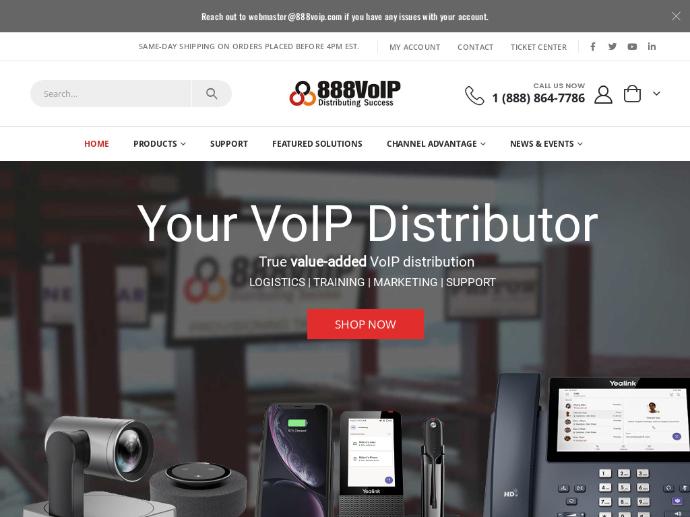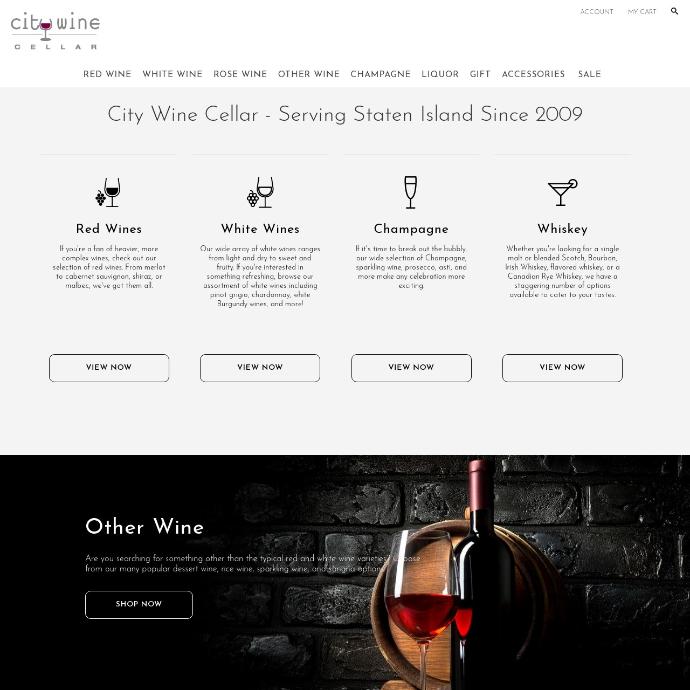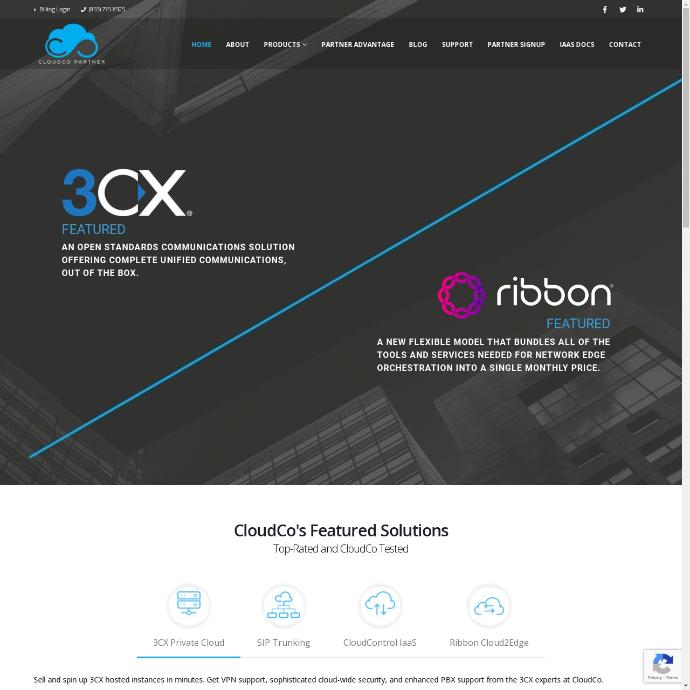Strategic guidance
I can provide a high-level direction, planning, and decision-making to align technology initiatives with business goals and objectives. That involves:
Setting up the Business Alignment
I can define the business's short-term and long-term objectives or align the strategy if they are defined already. This includes the company's mission, vision, values, market position, competitive landscape, and growth targets. By aligning technology strategies with these business goals, I will ensure the technology investments to be purposeful and directly contribute to the company's success.
Technology Roadmap Creation
A strategic technology roadmap is developed to outline the planned evolution of the organization's technology infrastructure and software applications. It typically spans several years and includes key milestones, technology upgrades, and project priorities. The roadmap serves as a guiding document for technology-related decision-making.
Outlining Resource Allocation
I can help to determine the appropriate budget allocation for technology initiatives and ensure resources such as development teams, infrastructure, and tools are allocated efficiently to meet strategic objectives.
Risk Assessment and Mitigation
Strategic guidance involves identifying potential risks and challenges that could hinder the achievement of technology-related goals. I will assess these risks and develops mitigation strategies to minimize their impact. This could include contingency plans for technology failures or data breaches.
Vendor and Partner Selection
If external vendors or technology partners are involved, I can assists in the selection process based on my prior experience. I can evaluate potential vendors, negotiate contracts, and ensure that the chosen partners align with the strategic vision and can deliver on their promises.
Maintaining Technology Trends and Innovation
Staying current with technology trends and innovations is essential. I will continually monitor the tech landscape to identify opportunities for innovation and competitive advantages, advising on the adoption of emerging technologies that can positively impact the business.
Data-Driven Decision-Making
Data analytics and insights play a significant role in strategic guidance. I always encourage the collection and analysis of relevant data to inform decision-making. I can definitely recommend tools and systems for data gathering and analysis, enabling data-driven strategies.
Compliance and Regulatory Considerations
Depending on the industry, there may be regulatory requirements and compliance standards that need to be met. I will ensure the company technology initiatives to be in full compliance with these regulations, reducing legal and reputational risks.
Communication and Stakeholder Engagement
Effective communication is key to successful strategic guidance. My job will be to communicate the technology roadmap and progress to stakeholders across the organization, ensuring everyone is aligned with the strategic vision.
Agility and Adaptability
While a strategic plan is essential, I also emphasize the importance of agility and adaptability, recognizing the business conditions to be a subject of a rapid transformation, and technology strategies to need an according pivot.
In summary, my strategic guidance is a holistic approach to shaping technology initiatives within any size company. It involves me in aligning technology with business goals, managing resources effectively, mitigating risks, embracing innovation, and ensuring that technology decisions contribute to the overall success and growth of the company.
Technology Stack Optimization
Technology stack optimization is a critical process in software development that involves fine-tuning the combination of technologies, frameworks, and tools used to build and maintain a software application. The goal is to enhance performance, scalability, security, maintainability, and cost-effectiveness while aligning the technology stack with the specific needs and goals of the project. Here's the list of subjects I can be involved in
Assessment and Evaluation
The optimization process begins with a comprehensive assessment of the existing technology stack, if applicable. This includes examining the programming languages, frameworks, libraries, databases, and infrastructure in use.
Performance Improvement
One of the primary objectives of stack optimization is to improve the performance of the software. This can involve identifying and eliminating bottlenecks, optimizing database queries, and implementing caching mechanisms to reduce load times.
Scalability Planning
Scalability is crucial for applications that need to handle increasing workloads. The technology stack is adjusted to accommodate growth by implementing horizontal or vertical scaling strategies and selecting scalable components and services.
Security Enhancements
Security is a top priority. The stack is reviewed and updated to incorporate the latest security practices and tools. This may include adding security libraries, implementing encryption, and following best practices for securing data and APIs.
Cost Optimization
An optimized technology stack is cost-effective. I will check and confirm whether certain components or services can be replaced with more affordable alternatives without compromising quality or functionality.
Maintainability and Extensibility
The technology stack should be chosen and configured to ensure ease of maintenance and future extensibility. This involves selecting components with active development communities, well-documented APIs, and support for modular architecture.
Compatibility and Integration
Ensuring that different components of the technology stack work seamlessly together is crucial. I will review and update the stack to ensure compatibility and efficient integration of various tools and services.
Alignment with Business Goals
The technology stack must align with the specific goals of the project and the broader business objectives. My job will be to evaluate whether the current stack supports the desired features, user experience, and business outcomes.
Flexibility and Adaptability
Technology evolves rapidly, and an optimized stack should be flexible and adaptable to incorporate new technologies and trends as they emerge. I will be able to assist in considerations of whether the stack can accommodate future changes without major disruptions.
Training and Skill Enhancement
I may be able to recommend training for the development team to ensure they are proficient in the optimized technology stack. This includes workshops or courses to build expertise in the chosen tools and frameworks.
Testing and Validation
Before implementing changes to the technology stack in a production environment, thorough testing and validation are conducted to ensure that the optimizations achieve the desired improvements without introducing new issues.
Documentation and Knowledge Transfer
Throughout the optimization process, documentation is updated or created to ensure that all team members understand the changes and can work effectively with the new stack. Knowledge transfer may also be facilitated to share expertise among team members. I will ensure the documentation is keeping up to the modern standards of noting and is reflecting the current state of the project.
Overall, technology stack optimization is a strategic process that requires careful analysis and planning. It aims to ensure that the technology stack is well-suited to the project's needs, aligns with business goals, and provides a solid foundation for building and maintaining a high-quality software application. I can take full responsibility for overseeing this process and making informed decisions to drive stack optimization.
Project Management
Project Initiation
The project begins with the creation of a project charter, which outlines the project's purpose, objectives, scope, stakeholders, and high-level requirements. It also formally authorizes the project.
Project Planning
That includes Scope Definition, Work Breakdown Structure, Schedule Development and Resource Planning. The other aspects of the planning are Cost Estimation and Budgeting, Risk Management and Communication Plan.
Clearly defining the project's scope is crucial to avoid scope creep. This involves specifying what is included and excluded from the project. The project has to be broken down into smaller, manageable tasks or work packages using a WBS. This hierarchical structure helps in organizing and tracking work.
A project schedule is created to outline task dependencies, start and end dates, milestones, and the critical path. Gantt charts and project management software are often used for scheduling. The allocation of resources, including human resources, equipment, and materials, is planned to ensure they are available when needed.
Project Execution
The project begins with the creation of a project charter, which outlines the project's purpose, objectives, scope, stakeholders, and high-level requirements. It also formally authorizes the project.
Project Closure
The project begins with the creation of a project charter, which outlines the project's purpose, objectives, scope, stakeholders, and high-level requirements. It also formally authorizes the project.
Quality Assurance
Quality assurance (QA) is a systematic and comprehensive process that focuses on ensuring the quality and reliability of products or services. It encompasses various activities, methods, and standards to prevent defects, verify compliance with quality standards, and continually improve processes. Quality assurance is especially critical in industries where product safety, performance, and customer satisfaction are paramount, such as manufacturing, healthcare, software development, and many others. The key details of the QA process are: Quality Planning, Process Design and Documentation, Quality Control, Training and Competence, Supplier Quality Assurance, Documentation and Record Keeping, Continuous Improvement and Auditing.
A separate section of the QA process is the Customer Feedback and Satisfaction control along with the Regulatory Compliance.
Certifications and Accreditation
QA often involves obtaining certifications and accreditations, such as ISO 9001, which demonstrate a commitment to quality and can enhance an organization's reputation.
Quality assurance is an ongoing process that requires dedication, attention to detail, and a commitment to delivering high-quality products or services consistently. It not only helps prevent defects and quality issues but also fosters a culture of quality within an organization, ultimately benefiting customers and stakeholders.
Team Mentoring
Team mentoring, also known as team development or team coaching, is a process where an experienced mentor provides guidance, support, and knowledge to a group of individuals working together as a team. The goal of team mentoring is to enhance the team's collective performance, effectiveness, and collaboration. Here's what I can do:
Identify of Team Needs
Team mentoring typically begins with an assessment of the team's needs and goals. This includes understanding the team's objectives, challenges, and areas where improvement is desired.
Perform a Mentor Selection
A mentor is chosen based on their expertise, experience, and compatibility with the team's objectives. The mentor should have relevant knowledge and skills that align with the team's needs.
Establish Objectives
Clear objectives and goals for team mentoring are defined. These objectives might include improving communication, enhancing problem-solving skills, or increasing productivity and efficiency.
Initial Assessment
The mentor conducts an initial assessment of the team's dynamics, strengths, weaknesses, and existing processes. This assessment helps identify areas that require attention.
Regular Meetings and Sessions
Team mentoring involves regular meetings or sessions with the mentor. These sessions can be conducted in person or virtually and may occur on a weekly, bi-weekly, or monthly basis, depending on the team's needs.
Skill Development
The mentor helps team members develop specific skills that are relevant to their roles and the team's objectives. This could involve technical skills, soft skills, leadership skills, or problem-solving skills.
Collaborative Problem-Solving
Team mentoring often includes collaborative problem-solving exercises. The mentor guides the team through real-world challenges, helping them develop effective solutions and decision-making processes.
Communication Improvement
Effective communication is crucial for team success. The mentor works with the team to improve communication skills, both within the team and when interacting with other stakeholders.
Conflict Resolution
If conflicts arise within the team, the mentor assists in resolving them constructively. This may involve facilitating difficult conversations, mediating disputes, or providing conflict resolution strategies.
Feedback and Reflection
Regular feedback sessions are conducted to assess progress and identify areas for improvement. Team members are encouraged to reflect on their own performance and collaboration.
Knowledge Transfer
The mentor shares their expertise and knowledge with the team, helping team members learn from their experience. This can include sharing best practices, industry insights, and lessons learned.
Empowerment and Autonomy
Team mentoring aims to empower team members to take ownership of their roles and responsibilities. The mentor encourages autonomy and decision-making within the team.
Customized Approach
Team mentoring is tailored to the unique needs and goals of the team. The mentor adapts their guidance and strategies to address specific challenges and opportunities.
Tracking Progress
Progress toward the defined objectives is continuously tracked and assessed. Adjustments to the mentoring approach are made as needed to ensure that the team is on the right path.
Team mentoring is a collaborative process that supports the professional growth and development of team members while enhancing the overall effectiveness of the team. It encourages a culture of continuous learning, problem-solving, and innovation, ultimately contributing to the achievement of the team's objectives and the success of the organization.
Scalability Planning
Scalability planning is a crucial aspect of technology and business strategy that involves preparing a system, application, or organization to handle increased workloads and growth efficiently. Scalability ensures that as demands on a system or organization grow, it can expand to meet those demands without compromising performance, reliability, or user experience.
Assessment of Current State
Scalability planning begins with an assessment of the current state of the system, application, or organization. This assessment identifies bottlenecks, limitations, and performance issues that need to be addressed.
Definition of Scalability Goals
Clear scalability goals are established, taking into account factors like expected growth rates, user traffic patterns, and resource requirements. These goals serve as benchmarks for scalability efforts.
Vertical vs. Horizontal Scalability
The important part if the scalability is to determine the acceptable model. Vertical Scalability involves increasing the capacity of existing hardware or infrastructure, such as upgrading a server with more CPU, memory, or storage. Horizontal Scalability focuses on adding more instances of the same resource (e.g., adding more servers) to distribute the workload and increase capacity.
Load Testing and Performance Analysis
Load testing is conducted to simulate various levels of user activity and traffic to understand how the system performs under different loads. Performance analysis helps identify bottlenecks and areas that need improvement.
Architectural Considerations
Scalability often requires architectural changes. Common architectural patterns for scalability include microservices architecture, distributed systems, and the use of load balancers to distribute traffic.
Database Scaling Strategies
Databases are a common point of contention in scalability planning. Strategies such as database sharding, replication, and the use of NoSQL databases may be employed to handle increased data volumes and traffic.
Caching and Content Delivery
Implementing caching mechanisms and content delivery networks (CDNs) can significantly improve response times and reduce the load on servers, enhancing scalability.
Elasticity and Cloud Computing
Leveraging cloud computing platforms like AWS, Azure, or Google Cloud provides elasticity, allowing resources to be automatically scaled up or down based on demand.
Scalability Testing
Scalability testing goes beyond load testing and assesses how well the system or application can handle rapid and substantial increases in load, often referred to as "bursting." This is crucial for handling unexpected traffic spikes.
Monitoring and Alerting
Implementing robust monitoring and alerting systems helps in proactive identification of scalability issues. Metrics like CPU utilization, memory usage, and response times are continuously monitored.
Auto-Scaling Policies
In cloud environments, auto-scaling policies are defined to automatically add or remove resources based on predefined thresholds or rules. This ensures that resources are efficiently allocated as needed.
Cost Considerations
Scalability planning includes cost considerations. As resources scale up, so do costs. It's essential to balance scalability with cost-effectiveness to ensure that the investment aligns with business objectives.
Failover and Redundancy
Redundancy and failover mechanisms are essential for ensuring high availability. In the event of system failures, traffic can be redirected to backup systems without disruption.
Documentation and Runbooks
Comprehensive documentation and runbooks are created to guide the operations team on how to manage and maintain the scalable architecture effectively.
Testing in Production
Scalability planning often involves "testing in production," where gradual deployments and monitoring are used to ensure that scalability measures work as expected without disrupting user experience.
Scalability planning is an ongoing process that evolves with the growth and changing demands of the system or organization. It is a critical aspect of ensuring that technology systems can adapt to the dynamic nature of business and user requirements while maintaining optimal performance and reliability.
Cost Efficiency
Cost efficiency is a strategic approach that aims to optimize an organization's use of resources, both financial and non-financial, to achieve its objectives while minimizing waste and unnecessary expenses. It involves analyzing, managing, and controlling costs across various aspects of an organization's operations.
Cost Reduction Strategies
Cost efficiency is a dynamic and continuous process that requires regular review and adaptation to changing market conditions, technology advancements, and organizational goals. It is a fundamental aspect of financial management that can contribute significantly to an organization's profitability and competitiveness.
Adaptive Technology Adoption
Adaptive technology adoption refers to the strategic process through which organizations select, implement, and adapt technological solutions to address specific business needs, challenges, and opportunities. This approach focuses on flexibility, responsiveness, and the ability to embrace and leverage emerging technologies to remain competitive and achieve strategic objectives.
Assessment of Business Needs
Adaptive technology adoption begins with a thorough assessment of an organization's current state, business goals, and specific needs. This includes identifying pain points, opportunities for improvement, and areas where technology can make a difference.
Technology Scanning
Organizations continuously monitor the technology landscape to identify emerging trends, innovations, and disruptive technologies that could impact their industry or operations.
Strategic Alignment
Technology adoption is closely aligned with the organization's strategic goals and objectives. It considers how technology can support and enhance the achievement of these goals.
Integration Capabilities
Adaptive adoption considers the integration capabilities of technology solutions with existing systems and infrastructure. Seamless integration reduces disruption and enhances efficiency.
Adaptive technology adoption enables organizations to thrive in rapidly changing environments by leveraging technology as a strategic enabler. It ensures that technology decisions are driven by the organization's specific needs and goals, allowing for a proactive response to market dynamics and opportunities.
Continuous Improvement
Continuous improvement, often referred to as continuous improvement process (CIP) or continuous improvement management (CIM), is a structured and ongoing approach that focuses on making incremental enhancements to processes, products, services, or organizational practices. It is a fundamental principle of quality management and is commonly associated with a number of methodologies, from which I prefer Lean.
Standardization
Successful improvements are standardized by updating procedures, documentation, and training materials to ensure that the new practices become the standard way of doing things.
Documentation and Knowledge Sharing
All improvement efforts, including data, analysis, and solutions, are documented for future reference. Knowledge sharing ensures that lessons learned are disseminated throughout the organization.
Continuous improvement is not a one-time project but an ongoing philosophy that aims to create a culture of excellence and innovation within an organization. It leads to increased efficiency, higher quality products or services, reduced costs, and improved customer satisfaction, ultimately contributing to an organization's long-term success.









